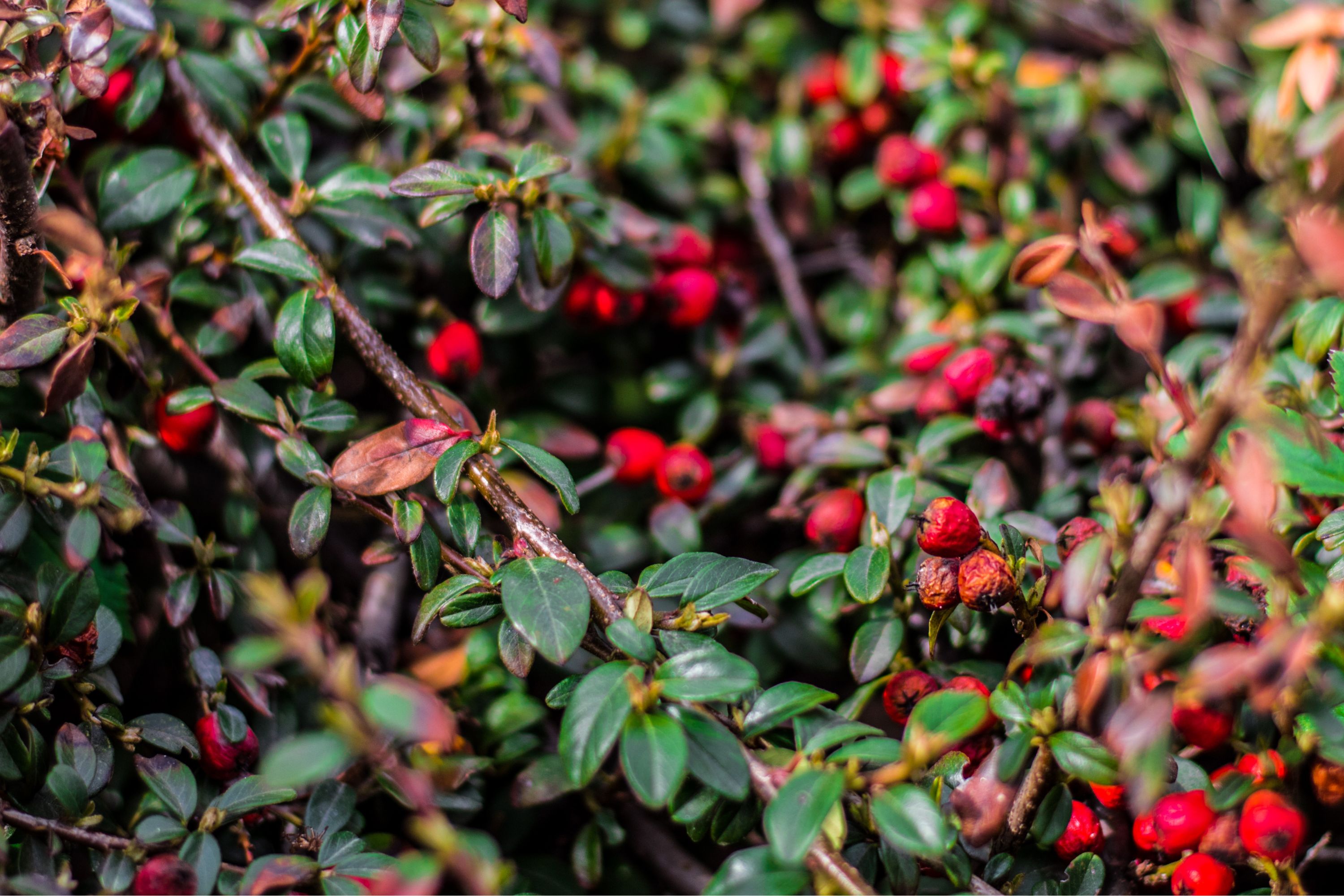Yaupon
(Ilex vomitoria)

Description
Ilex vomitoria, commonly known as yaupon or yaupon holly, is a species of holly that is native to southeastern North America. The word yaupon was derived from the Catawban. Another common name, cassina, was borrowed from Timucua (despite this, it usually refers to Ilex cassine). The Latin name comes from an incorrect belief by Europeans that the plant caused vomiting in certain ceremonies. The plant was traditionally used by Native Americans to make an infusion containing caffeine. It is only one of two known plants endemic to North America that produce caffeine. The other (containing 80% less) is Ilex cassine, commonly known as dahoon holly. Yaupon is also widely used for landscaping in its native range. Yaupon holly is an evergreen shrub or small tree reaching 5–9 m tall, with smooth, light gray bark and slender, hairy shoots. The leaf arrangement is alternate, with leaves ovate to elliptical and a rounded apex with crenate or coarsely serrated margin, 1–4.5 cm long and 1–2 cm broad, glossy dark green above, slightly paler below. The flowers are 5–5.5 mm diameter, with a white four-lobed corolla. The fruit is a small round, shiny, and red (occasionally yellow) drupe 4–6 mm diameter containing four pits, which are dispersed by birds eating the fruit. The species may be distinguished from the similar Ilex cassine by its smaller leaves with a rounded, not acute apex. I. vomitoria occurs in the United States from the Eastern Shore of Virginia south to Florida and west to Oklahoma and Texas. A disjunct population occurs in the Mexican state of Chiapas. It generally occurs in coastal areas in well-drained sandy soils, and can be found on the upper edges of brackish and salt marshes, sandy hammocks, coastal sand dunes, inner-dune depressions, sandhills, maritime forests, nontidal forested wetlands, well-drained forests and pine flatwoods. The fruit are an important food for many birds, including Florida duck, American black duck, mourning dove, ruffed grouse, bobwhite quail, wild turkey, northern flicker, sapsuckers, cedar waxwing, eastern bluebird, American robin, gray catbird, northern mockingbird, and white-throated sparrow. Mammals that eat the fruit include nine-banded armadillo, American black bear, gray fox, raccoon and skunks. The foliage and twigs are browsed by white-tailed deer.
Taxonomic tree:







